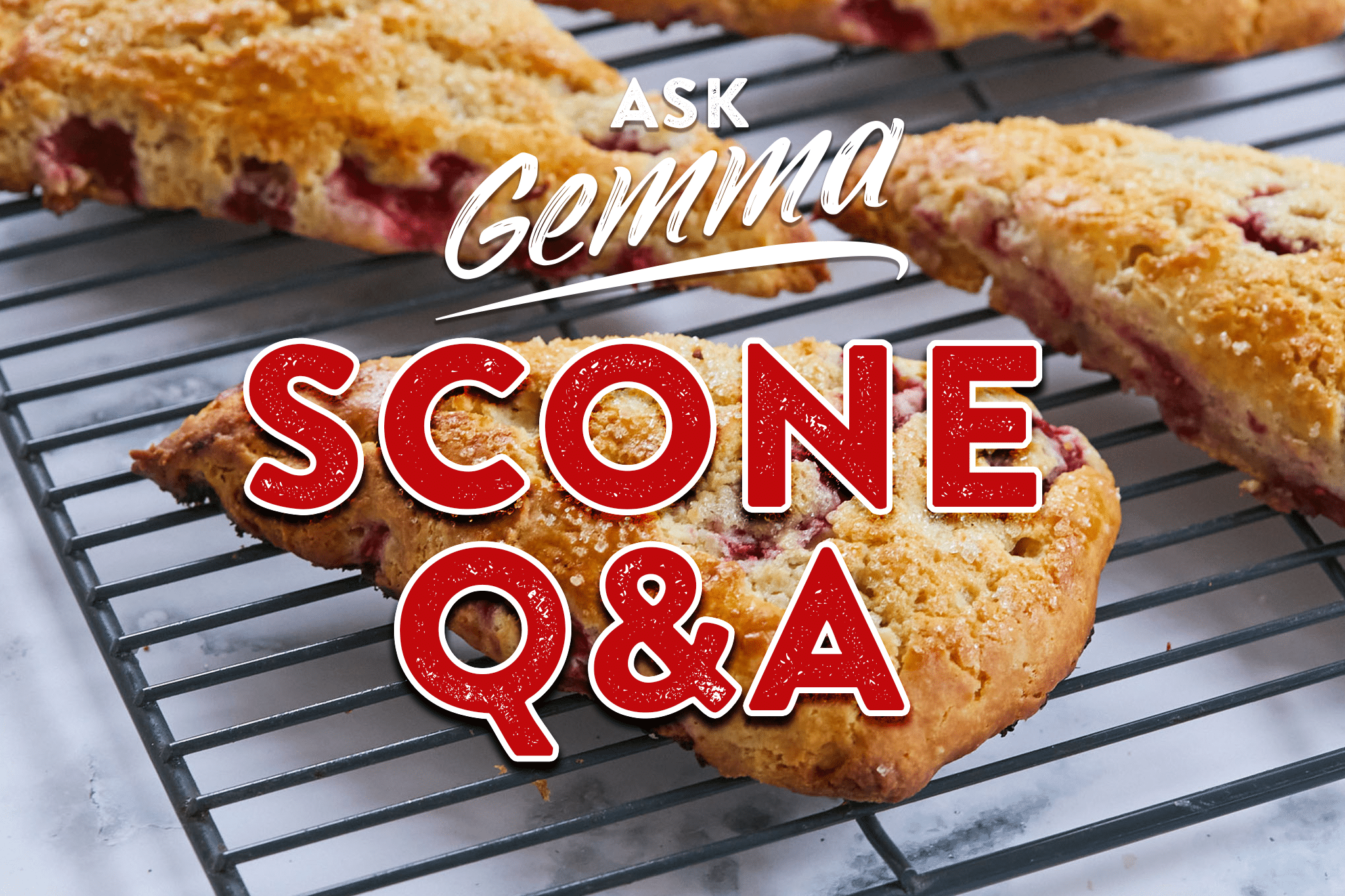
This post may contain affiliate links. Please see my full disclosure for details.
Hi Bold Bakers!
After years of gathering up so much information, we created some documents that will help you make ice cream, cookies, cakes, cheesecakes, pastries, and more! In this comprehensive Scone Q&A post, I have your scone questions answered. Ask me anything that’s missing in the comments and I’ll answer!
Table of Content
- Scone Q&A: Dry Ingredients in Scones
- Scone Q&A: Fats in Scones (Butter or Margarine)
- Scone Q&A: Wet Ingredients in Scones
- Scone Q&A: How to Store Scones
- Scone Q&A: How to Bake Scones
- Scone Q&A: Serving Suggestions and Flavors for Scones
- Scone Recipes for All
Scone Q&A: Dry Ingredients in Scones
Q: Can you use whole wheat flour for making scones?
A: Yes, although your results will be denser so I recommend using up to half whole wheat flour and half all-purpose flour to reduce the density and the bitter aftertaste.
Q: Can you use gluten-free flour in scones?
A: Yes, you can use a gluten-free all-purpose flour blend. Just note that they’ll be a little crumblier. I recommend Bob’s Red Mill 1 to 1 Baking Flour or King Arthur Flour Measure for Measure flour.
Q: Is the extra baking powder necessary besides the amount of it in self-raising flour? Can you skip the extra baking powder?
A: If you omit or reduce the extra amount of baking powder the scones will not rise so high as the ones shown in the video.
Q: Why do scones call for so much baking powder?
A: Baking powder is a very important raising agent for this recipe since it leavens the whole recipe mixture instead of just flour. Therefore, with all other heavy ingredients involved, it’s necessary to use a lot of baking powder to give the scones a decent rise. You can reduce it but your results will be denser.
Q: Can I swap baking powder for baking soda in scones?
A: I do not recommend so. Baking soda is a leavening agent that reacts with acid to create air bubbles to make your baked goods rise, so yogurt/buttermilk/sour cream is paired with it.
Baking powder is baking soda and cream of tartar (dry acid), which needs liquid like milk and doesn’t have to contain acid. Both are raising agents yes, but are activated differently. I recommend using whatever leavening agent your recipe suggests.
Gemma’s Best-Ever Irish Scones
Q: Why were my scones bitter?
A: You may have used too much baking powder. Be sure to use level measurements. Using aluminum-free baking powder may also help.
Scone Q&A: Fats in Scones (Butter or Margarine)
Q: Can you use margarine instead of butter?
A: Yes, you can use hard block-type margarine but don’t use spreadable margarine since it has too much water and will change the texture of your scones. I will tell you, my preference is real dairy butter but margarine is a great vegan option.
Q: Do I have to add salt if I am also using salted butter in my scones?
A: The extra salt is optional for extra flavor. You can omit it or reduce the amount if your self-raising flour contains salt or adjust it to your preference. I learned when I moved to the US that store-bought self-raising flour contains salt here.
Q: Should I use salted butter or unsalted butter when making scones?
A: You can use either since the amount of salt in salted butter is so little that it barely makes a difference. I prefer salted butter due to the slight added flavor but using unsalted butter will give you more control of the salt in your scones.
Q: Can I rub cold butter into the dough instead of grating frozen butter into it?
A: You can but the results would be denser.
- Water from frozen butter will evaporate during baking to help the dough rise and create layers. If the butter is not cold enough, it means part of its water content has already evaporated into the air before going into the oven. So not enough to raise the dough during baking.
- The temperature of your hand will warm up or melt parts of the butter and will likely toughen the dough, not recommended. Using a cheese grater can minimize this.
- The frozen butter creates pockets of steam when it is melting during the baking process. This creates flaky layers, much in the same way as it does in puff pastry. Rubbing the butter in will give a slightly denser result, but it will still be good though!
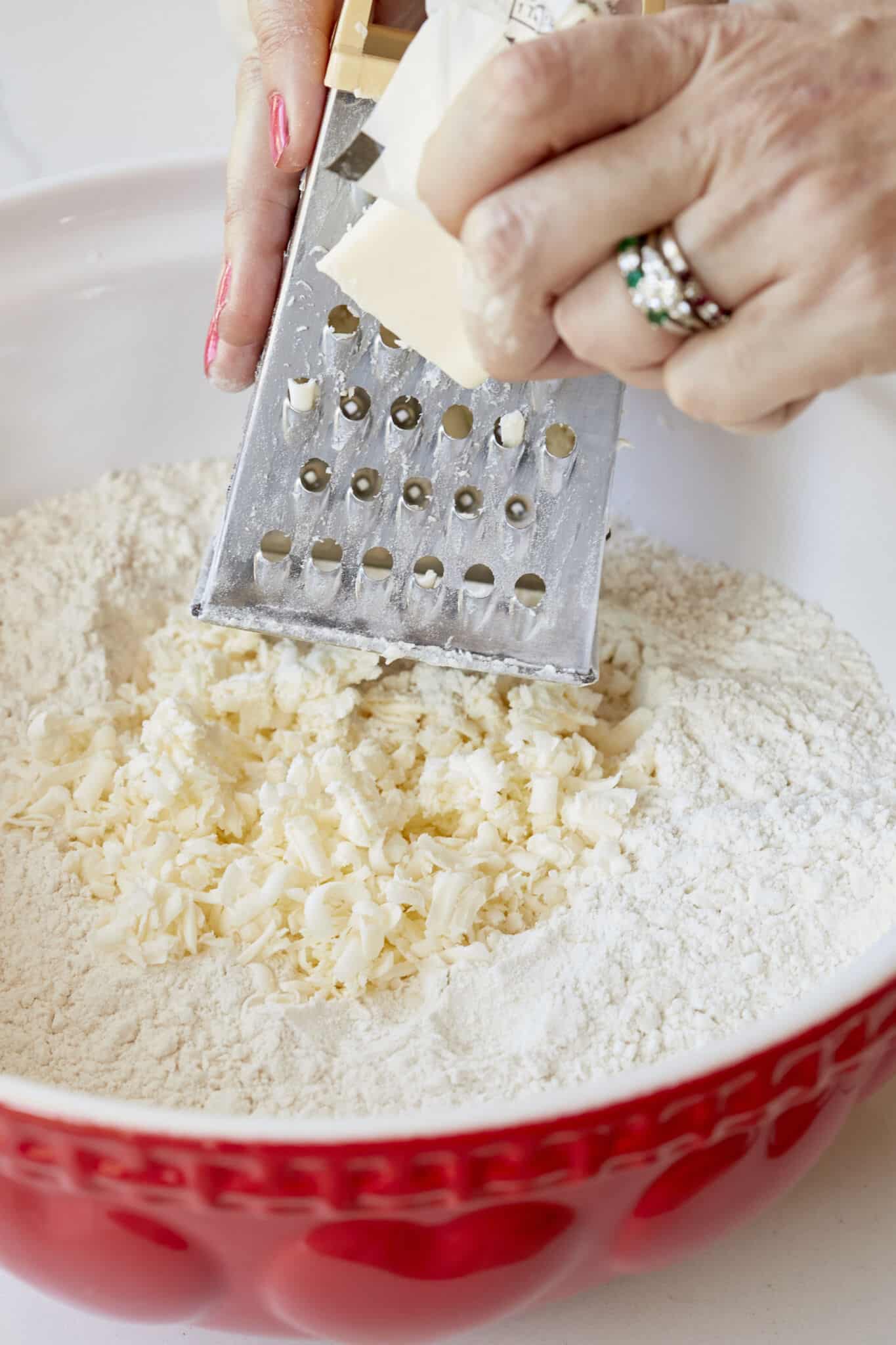
Q: Can I use margarine to make scones?
A: Yes, you can use margarine in the block form instead of the spreadable one from a tub, to ensure the best rise of your scone. But I personally choose real butter for superior scones in flavors and texture.
Scone Q&A: Wet Ingredients in Scones
Q: Can I use buttermilk instead of milk?
A: Yes, you can! Because my scones are leavened with baking powder which will work with any type of liquid. Buttermilk contains acid to make scones more moist and softer.
But in recipes leavened with baking soda which requires acid to get activated to make baked goods rise, buttermilk, sour cream or yogurt is irreplaceable and milk will not work well.
Q: What’s the difference between using regular milk or buttermilk in scones?
A: Milk is dairy and contains a very small amount of acid. Buttermilk can be dairy or non-dairy and contains much more acid than milk does.
- While using buttermilk, the acid will break down protein in flour to make scones soft. In this way, the protein won’t have big holes so water will be locked in to make scones more moist.
- In general, baking soda is a leavening agent that reacts with acid to create air bubbles to make your baked goods rise, so it has to pair with yogurt/buttermilk/sour cream. Baking powder is baking soda and cream of tartar (dry acid), which needs liquid that doesn’t have to contain acid to activate.
- My Best-Ever Scone Recipe is leavened with baking powder so both milk and buttermilk will make scones rise but milk provides a richer taste and buttermilk tends to yield a tenderer texture.
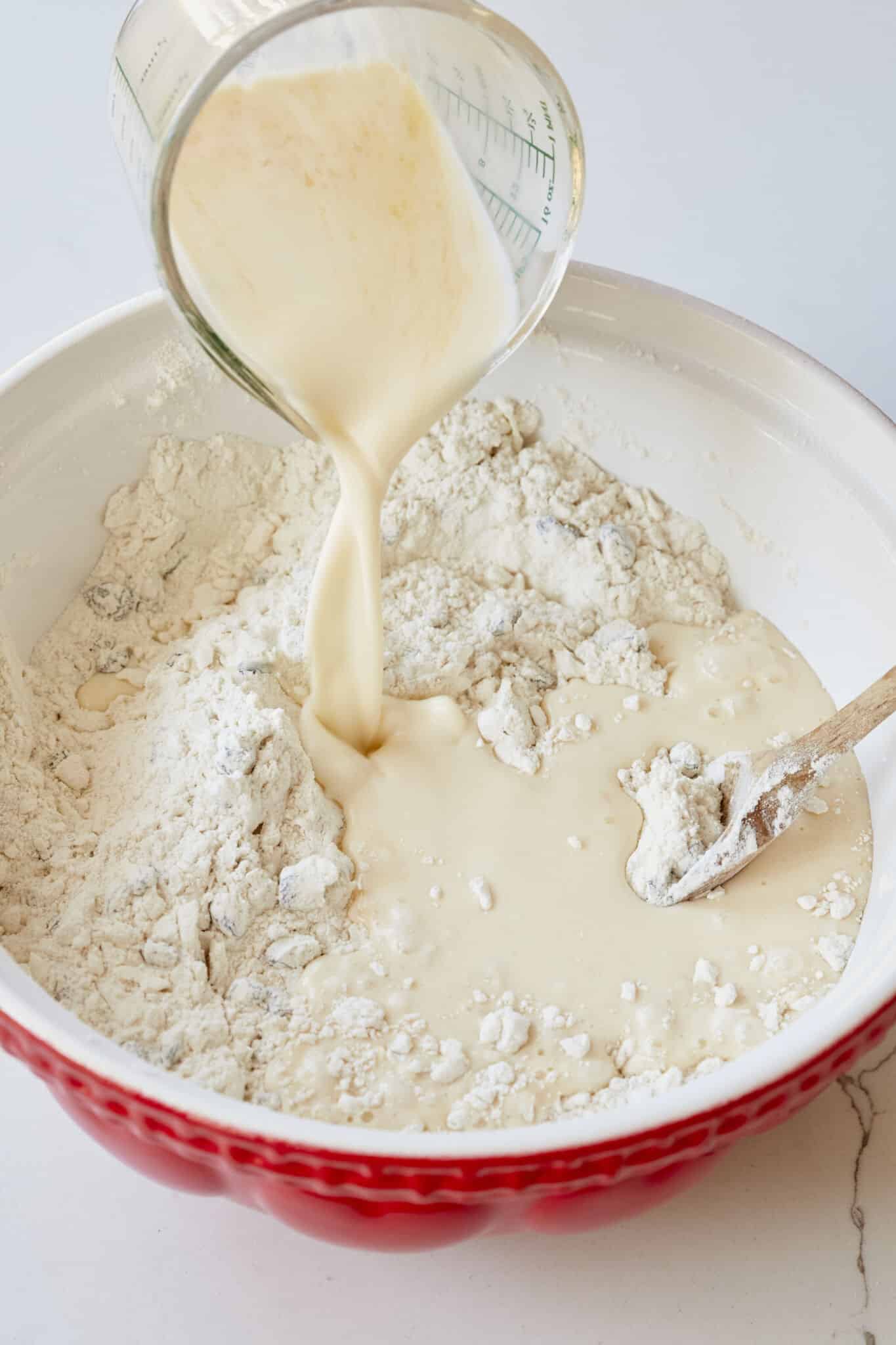
Q: Can you replace the cream in scones?
A: Yes, you can use whole milk but the taste won’t be so rich due to the much lower fat content in milk. You can also use full-fat coconut milk for a dairy-free option.
Q: Can you use a milk substitute in scones?
A: Yes, you can use a plant-based milk of your choice from my article The Best Dairy-Free Milk Options.
Note to hold back some liquid by using up to ¾ in one go and adjust it accordingly to get the same consistency as my Best-Ever Scone Recipe.
Q: Can I use the leftover cream from the clotted cream recipe in place of cream and milk?
A: Yes, you can! But you will need to thin it out with milk or buttermilk to make it the same consistency as the liquid you are replacing. Clotted cream is very thick by nature.
Q: Can you substitute sour cream for double cream?
A: Yes, you can replace double cream with sour cream at a 1:1 ratio.
- Sour cream contains more moisture and less fat than double cream, so scones made with sour cream will be tangier and more moist but less rich and less creamy.
- Double cream has a higher fat content which contributes to the tenderness and richness of the scones.
- When using sour cream, you’ll be reducing the fat content, which can affect the overall flavor and texture.
Q: Why is my scone dough wet and sticky?
A: You may have added a tad more liquid. The dough is pretty loose. Sometimes flour absorbs moisture at different rates and you might not need all the liquid here. Next time add little by little until the dough is moist, but not wet.
Scone Q&A: How to Store Scones
Q: Can I refrigerate the scone dough overnight and bake it in the morning?
A: Yes absolutely. Most baking powders on the market today are stable so they should last overnight but if yours isn’t, your scones will be denser since the baking powder won’t be as active.
Q: Can I freeze the unbaked scones to be baked later?
A: Yes, you can freeze individual, raw scones. I do it all the time for my son’s lunch box or a sweet treat if someone is coming over for coffee.
- To bake frozen scones, place them on a lined baking tray at room temperature for roughly 20 minutes to defrost. Preheat the oven, brush with egg wash and bake as directed in the recipe.
- If frozen after baking, they can be refreshed in the oven at 325°F (165°C) for about 10 minutes and will be as good as fresh scones!
Scone Q&A: How to Bake Scones
Q: Should you use a convection oven to make scones?
A: Most of my recipes like my scone recipe are based on a normal conventional oven (unless specified otherwise) without using a fan or top heating elements.
- If you use the convection oven baking (with a fan), lower the temperature by roughly 25°F or follow the manufacturer’s manual.
- An air fryer works like a convection oven which is fan-assisted with heating elements on the ceiling inside the baking chamber. You should lower your temperature by about 25°F(15°C) compared to the recipe, bake for a shorter time, or follow the manual instructions.
Q: What oven rack should I use to bake the scones?
A: I prefer the middle rack since the oven’s heat is most evenly distributed in the middle of the oven.
Q: Is it important to egg wash scones?
A: Egg wash contributes to the browning effect to yield a golden brown top for the scones and also prevents scones from drying out.
You can use egg wash, milk mixture leftover from making scone dough, melted butter, cream, or milk.
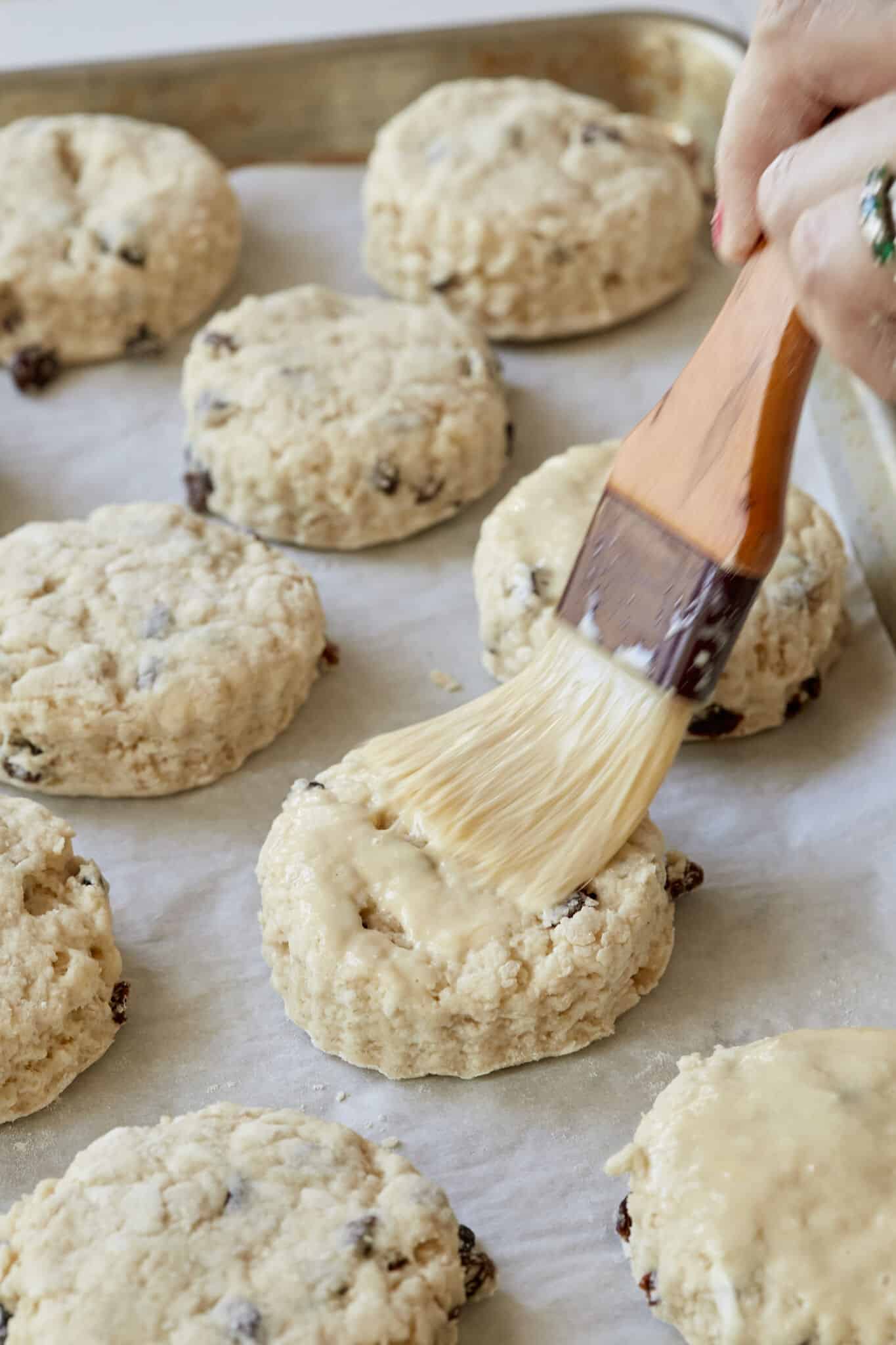
Scone Q&A: Serving Suggestions and Flavors for Scones
Q: Can I use jam in scones instead of fresh fruit in scones?
A: I don’t recommend that. The high sugar content in the jam will cause it to burn in the oven but jam would be lovely on top of scones!
Q: If using frozen berries in scones, do I have to thaw them first?
A: Nope, you don’t have to defrost frozen fruits for scones. Use them as is.
Q: Is it ok to add mixins and other flavors to scone dough?
A: Yes, you can add dried fruits that are soaked in juice or water and have been drained, chopped toasted pecans, walnuts, chocolate chips, cream cheese cubes or fresh fruits that are not overly-juicy, such as blueberries and raspberries.
Other options include vanilla extract, ground spices such as cinnamon, cardamom, Italian seasoning, or different flavors of glaze.
Q: What is clotted cream and do you serve it with scones?
A: Clotted cream is a thicken, velvety cream made by gently heating full-fat cow’s milk and then allowing it to cool slowly. Clotted cream has a high fat content, typically around 48-63%, giving it a luxurious and indulgent texture.
It’s served with scones with jam. You can make it at home using the recipe Easy Clotted Cream (How to Make it in 3 Ways).
Q: How to make whipped cream to serve with my scones, What is your recipe?
A: You can use dairy heavy cream or whipping cream to make whipped cream from this recipe using an electric mixer or using a mason jar.
Q: Gemma, what’s the difference between your Traditional Irish Scones and Best-Ever Irish Scones recipes?
A: My Traditional Irish Scones are plainer and less rich than the Best-Ever Scones. That said, they’re both delicious!
Scone Recipes for All
- Gemma’s Best-Ever Irish Scones
- Pizza Scones
- Simple Raspberry Scones
- Fresh Blueberry Scones
- Chocolate Scones
- Chocolate Chip Scones
- Apple Sage and Cheddar Scones
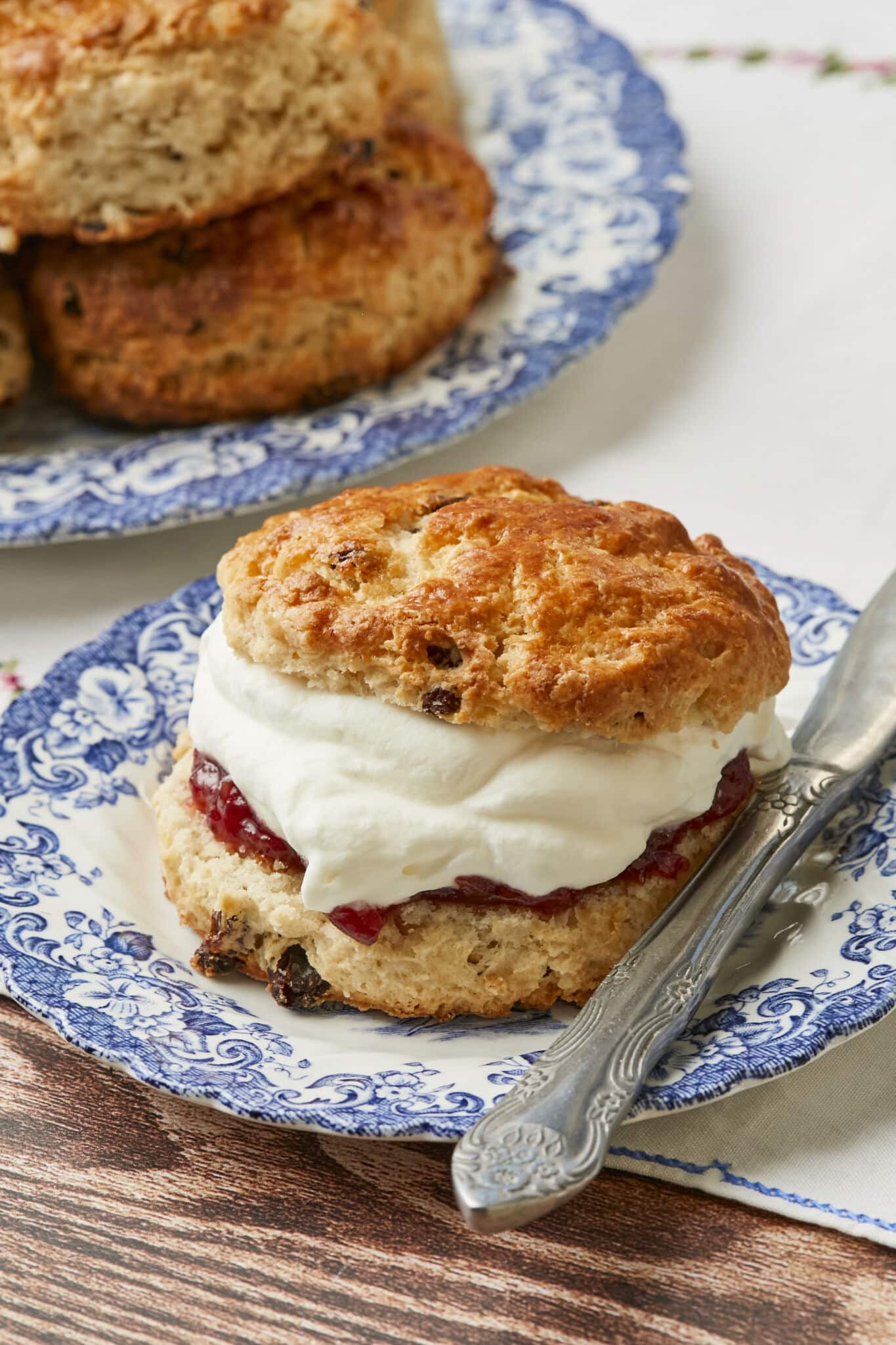
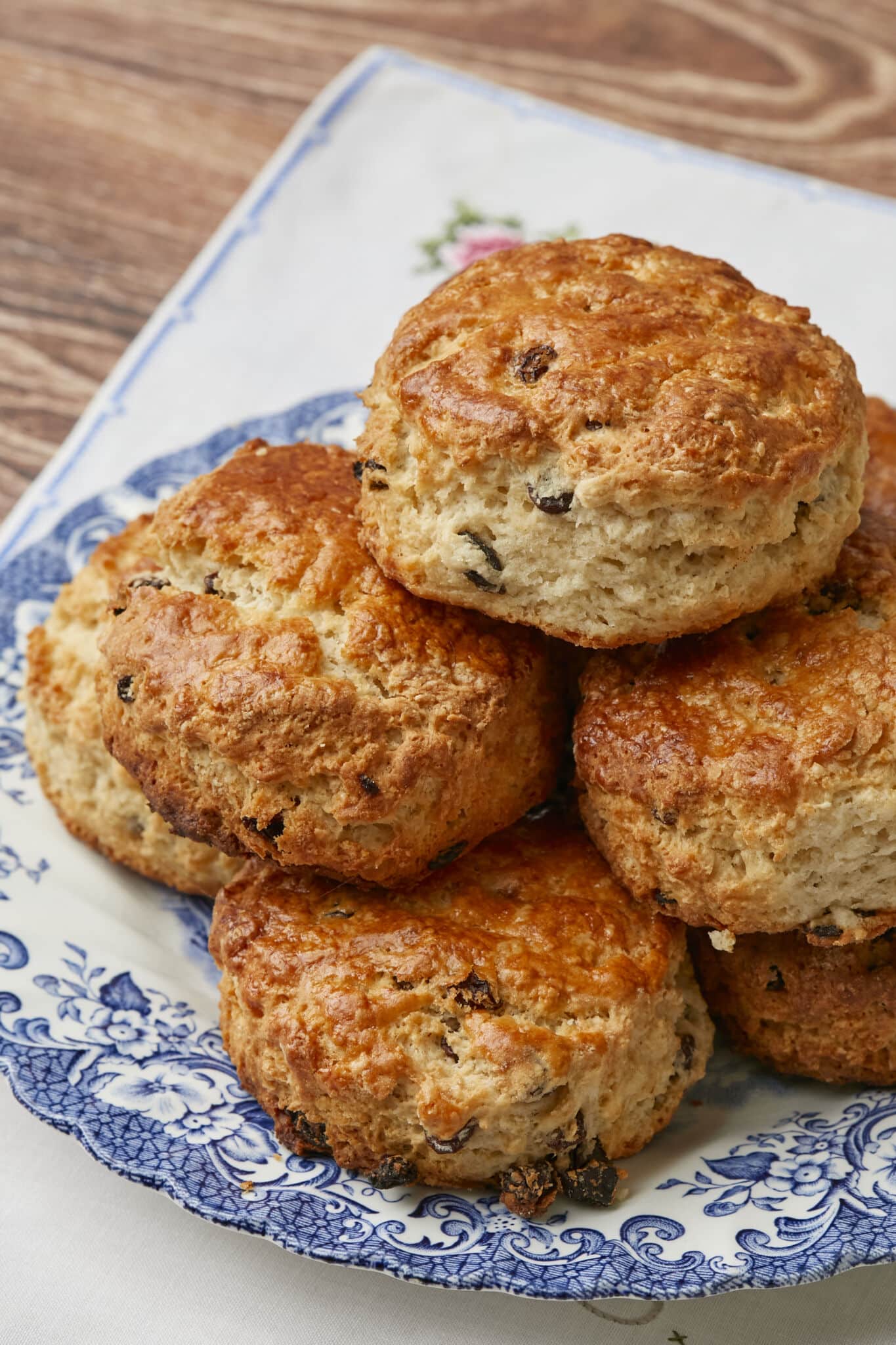


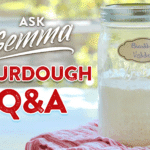




Can I use evaporated milk instead of fresh milk in my scone mixture ? tku
Thank you for this very informative article! Despite baking breads for decades, there is much yet for me to learn. Your recipes and explanations are much appreciated!
Can we deduce from this recipe statement regarding oven temp and NO fan… That the rest of your recipes are for conventional ovens?
You’ve got such a massive international fan base, where fan ovens are just the *norm*..While some models come with a fan off feature, many ovens don’t.
Could you maybe give clarification regarding oven type you prefer for your recipes.
Have you evaluated the “lemonade and cream” method? What do you think of it? Thanks.
Why are my scones dry the next day after baking